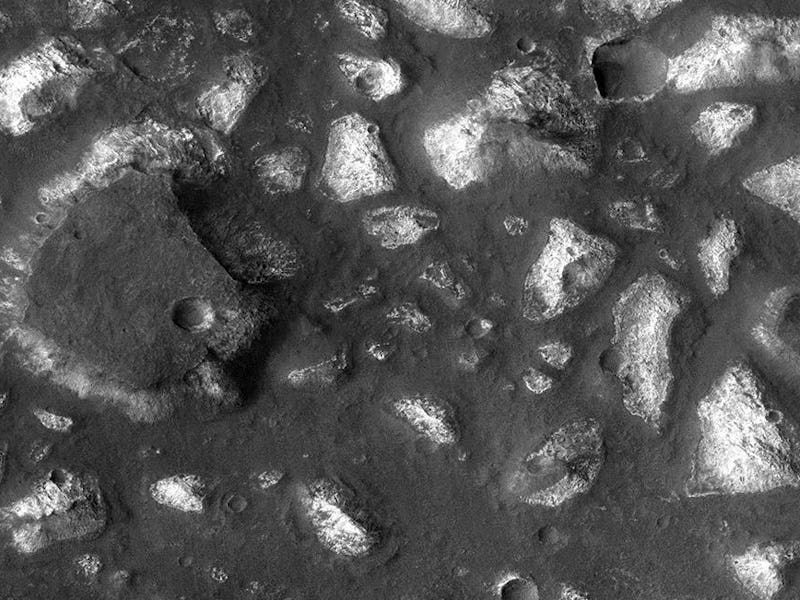Scientists Suspect Martian 'Cradle of Life' Is This Ancient Seafloor
Sometimes life just needs "rocks, heat, and water."

Mars is a dusty planet plagued by giant dust devils and carbon dioxide snow and is also maybe where your descendants will spend the last of their mortal days. But this isn’t how it always was: According to recent research from NASA, about 3.7 billion years ago the Red Planet, which is approximately 34 million miles away from Earth, contained seafloor hydrothermal deposits — hot springs that pumped mineral-filled water into a giant Martian sea. This discovery reveals how Mars once was and also provides some evidence to how life may have begun on our own planet.
In a paper published in July in Nature Communications that gained traction after NASA publicized the findings last week, a team of international scientists explain that their ancient seafloor hypothesis emerged after analyzing photographs taken by NASA’s Mars Reconnaissance Orbiter. The spacecraft took an image of massive deposits in a basin on southern Mars called the Eridania basin, and the shape and texture of the site’s bedrock layers indicated that it might be the site of former hydrothermal deposits.
The Eridania region of Mars.
“This site gives us a compelling story for a deep, long-lived sea and a deep-sea hydrothermal environment,” says Paul Niles, a planetary geologist at NASA’s Johnson Space Center, in a statement. “It is evocative of the deep-sea hydrothermal environments on Earth, similar to environments where life might be found on other worlds — life that doesn’t need a nice atmosphere or temperate surface, but just rocks, heat, and water.”
These seafloor deposits might even be a window into what early Earth was like. Some scientists theorize that life began on Earth in hydrothermal conditions around the same time that these Martian hot springs flourished.
However, it’s tricky to know for sure because the geological record of early-Earth environments are not well preserved.
How hydrothermal activity works.
“Volcanic activity combined with standing water provided conditions that were likely similar to conditions that existed on Earth at about the same time — when early life was evolving here.”
It’s becoming more and more obvious that Mars was a pretty wet and wild place — and far more sustainable place for life that the meagerly watered planet is now. It’s uncertain how Earthlings will thrive there, but until then, Mars can tell us more about how life on Earth began in the first place.
If you liked this article, check out this video of a hole on Mars that could be home to Martian life.